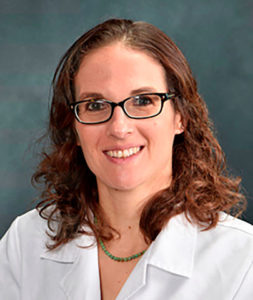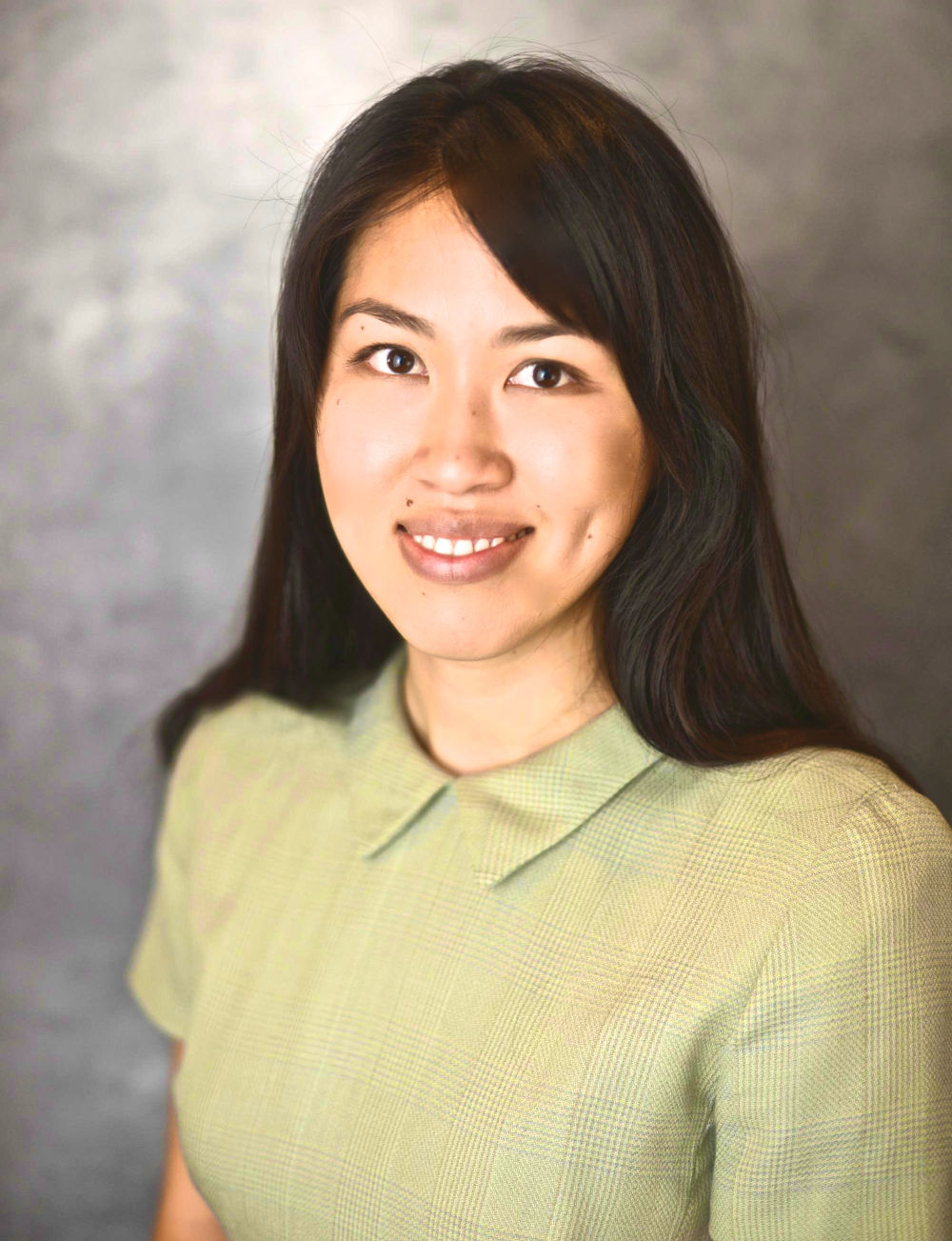Improving Health Outcomes for Older Adults
A SIDM Seed Grant and Fellowship Help Explore Solutions
By Susan Carr, Senior Writer
When an older adult falls and can’t get up, responses from emergency medical teams are a vital and sometimes life-saving resource. Those so-called “lift-assist” calls are often the first point of contact for a patient in need of care—sometimes that care need is more than simply helping them back in bed or in their chair. The decisions made about how to treat patients on the scene, what questions to ask, and how much intervention is required takes skill and good judgment.

Maia Dorsett, MD, PhD, FAEMS, Assistant Professor of Emergency Medicine, Division of Prehospital Medicine, Dept of Emergency Medicine, University of Rochester Medical Center Rochester, New York
“Our goal is to improve assessment of geriatric falls on the first visit so we know who needs transport to the emergency department and how to quickly get others the help they need,” says Maia Dorsett, MD. As an emergency physician and medical director for an emergency medical service (EMS) provider in upstate New York, she knows that when older adults need EMS help to recover from a fall, it’s important to explore why they fell in the first place. Based on the number of these patients who need help again within 72 hours, it appears that medical conditions are often missed on the first “lift assist” call.
Dr. Dorsett describes a situation she and other EMS clinicians often face when responding to a geriatric fall at home: "A common scenario is that someone is on the floor when we arrive. We can put them back on the recliner or in bed. They don’t need or want transport, but they may not be able to get up on their own. They might not eat or drink for a few days. They may already have sores and renal failure because they literally can't get up. Without proper support, these patients do very poorly, which is completely preventable. If we can get them the right resources, we have a chance to change that trajectory."
SIDM Awards Age-Friendly Grants
Dr. Dorsett is leading a multidisciplinary team of EMS clinicians in New York on a project to improve assessment of geriatric fall patients, for which she received the 2022-2023 Age-Friendly DxQI Seed Grant from the Society to Improve Diagnosis in Medicine (SIDM).
That grant and an Age-Friendly Fellowship in Diagnostic Excellence are supported by The John A. Hartford Foundation in conjunction with the Age-Friendly Health Systems initiative, co-led by the Institute for Healthcare Improvement. The initiative aims to prepare healthcare organizations for the demographic surge in older adults and to address their specialized needs with evidence-based practices and patient-centered care.
“Diagnostic excellence is an essential component of age-friendly care for older adults, but it can be challenging to achieve when patients have complex conditions, hearing loss, or cognitive impairment, or when ageist bias leads to clinicians dismissing symptoms,” says Terry Fulmer, RN, PhD, president of The John A. Hartford Foundation. “We are supporting SIDM and other organizations so that all healthcare providers, in all settings, have the understanding and tools they need to reduce diagnostic error and harm.”
Age-Friendly DxQI Seed Grant Addresses Missed Diagnoses Following Falls
Examining challenges related to the goal of Dr. Dorsett’s project—to reduce the incidence of repeat 911 calls within 72 hours of an initial EMS visit for a geriatric “lift assist”—quickly leads to complex issues in diagnostic improvement with special relevance for older adults. The complexity involves factors in the patient population, provider expectations, and systems of care.
The study population includes Individuals who have fallen at home and call 911 for assistance in getting up, many of whom are not transported to the hospital.
Data from the team’s local area indicate that a significant number of these non-transport lift-assist patients are experiencing undiagnosed deterioration or medical problems. As reported in the Project Charter, in 2020-21: “…One out of every 14 lift assist visits has a repeat 911 encounter within 72 hrs, and 70% of these repeated visits resulted in patient transport to the emergency department. 46% of these subsequent calls were medical, 16% for trauma and 38% for repeat fall/lift assist requests suggesting that there is a significant burden of undiagnosed medical illness and traumatic injury on the first visit.”
The following year, data from three EMS agencies from the same region show that among 1,135 lift-assist EMS calls, 11% called for help again within 72 hours. A majority of the repeat-call patients were transported to the hospital for emergency care, and 89% of those were admitted, with an average length of stay of eight to nine days.
One out of every 14 lift assist visits has a repeat 911 encounter within 72 hrs, and 70% of these repeated visits resulted in patient transport to the emergency department. 46% of these subsequent calls were medical, 16% for trauma and 38% for repeat fall/lift assist requests suggesting that there is a significant burden of undiagnosed medical illness and traumatic injury on the first visit.
Dr. Dorsett hypothesized that the incidence of these repeat calls could be reduced through better assessment during the initial call without increasing unnecessary visits to the ED. While some patients’ need for hospital-level care was missed at the first encounter, many others had non-acute problems that could have been recognized on the initial visit and addressed by a primary care physician, case manager or community resources.
Dr. Dorsett’s project team includes physicians and paramedics from CHS Mobile Integrated Healthcare, Inc., Perinton Volunteer Ambulance, and Pittsford Volunteer Ambulance, groups that work with local fire and police departments, neighboring EMS agencies, health organizations, and others to provide prehospital care in Monroe County, New York. The improvement actions of this project primarily involve emergency medical technicians (EMTs) and paramedics who respond to calls, assess patients in the field, and provide the initial diagnosis.
System Issues and Industry Culture Contribute to Missed Diagnoses
Studying a similar trend of missed diagnosis among EMS calls for “older fallers” in Australia, researchers found that clinicians’ “role perception” contributed to the problem. They observed that most people who become EMS clinicians are initially drawn to acute, dramatic, and sometimes life-threatening events the specialty is known and named for. Their interest and training, as well as production pressure, devalue the sub-acute events that are increasingly common among EMS calls. Acute emergencies may require advanced skills and knowledge, but they often do not demand the same kind of complex clinical decision making as calls to assist frail and elderly patients, which can also be lifesaving.
Dr. Dorsett identified other biases that contribute to missed diagnoses in these circumstances. When the call is for lift assist, some EMS clinicians—as well as patients and family members—may assume the person needing help is not ill and believe that reassurance and a steady hand are all that’s required. In a blog post for the National Association of EMS Physicians, Dr. Dorsett observed that this leads to low-acuity bias, calling “lift assist” a “potentially dangerous term because it puts providers in the mindset that the patient is not ill.” This bias affects how the patient is treated and which clinicians and equipment are sent in response. “Sometimes it’s the local fire department that comes, picks you up off the floor, puts you back in the recliner, and that’s the end of the call,” she says.
Another contributing factor is the assumption that physicians alone perform diagnosis. Dr. Dorsett observed that even within health care, EMS clinicians have chiefly been thought of as transporters, with medical care, including diagnosis, beginning when the patient enters the emergency room. EMS clinicians, however, can and often do provide initial assessment, provisional diagnosis, and treatment in the field. According to Dr. Dorsett, approximately 30% of all 911 calls do not result in transport. “There are all of these patients who are not actually seen by the rest of the healthcare system,” she says. EMS may be their only opportunity for diagnosis and care.
Many lift-assist patients present with complex, chronic medical needs that can, with proper training and time, be handled with out-of-hospital care managed initially by EMS clinicians. With appropriate support, EMTs and paramedics can guide patients to the level of care they need at home, from rapid follow-up with primary care to increased home care and monitoring. But that will take time to develop, support, and execute effectively.
When patients do need hospital-based care, having assessment and initial diagnosis performed well by EMS can increase efficiency and improve outcomes. Dr. Dorsett describes the “upstream” role EMS clinicians play in diagnosis as patients transition from out-of-hospital to emergency and inpatient care: "EMS clinicians are upstream in the process. The information they provide is what I, as a physician, use downstream to start my diagnostic process. If things are not on the right trajectory upstream, then the probability that I will arrive at a timely or accurate diagnosis downstream for other conditions is significantly decreased."
Initial Steps Will Include Piloting New Tools and Processes
With awareness of these pitfalls, Dr. Dorsett and her team are working toward improving EMS assessment of lift-assist patients and decreasing the number of repeat calls. Based on experience, research, and chart analysis, the team is developing a set of actions they expect will improve EMS assessment and diagnosis, including the following, to be piloted over the course of the seed grant year:
- Record a complete set of vital signs, including heart and respiratory rate, pulse, and blood pressure in all lift-assist patients.
- Assess and document that the patient is at their baseline ambulatory status.
- Improve education for EMS professionals regarding potential medical complexity of fall-assist patients.
- Assess safety of the home environment.
- Maintain contacts with potential community resources for elderly patients and families.
- Establish communications with primary care practitioners.
Dr. Dorsett and her team know this is just the beginning of a long improvement process. Initial stages of the project—to develop and test improved assessment tools and processes—have already led them to engage case managers at local accountable care organizations in the work. Future progress will include rethinking the culture and value system within EMS, as well as successfully implementing new methods.
Reflecting on the impact of the project, Dr. Dorsett says, "As medical directors and clinical leaders, we need to pay attention to all of these perceived low-acuity calls because that's where the diagnostic misses are happening. Plus, just transporting somebody in the emergency department can cause harm if they don't need to be there. We have to do a really good job because there is a lot at stake in the decisions we make."
# # #
Further Resources
“Achieving Diagnostic Excellence for Older Patients” – JAMA viewpoint
“Researching Lift-Assists: Nebulous Complexity” – Prehospital Emergency Care commentary
Thinking: Lift Assist – episode of the medicmindset podcast featuring Maia Dorsett, MD
“Workshop on Advancing Diagnostic Excellence for Older Adults,” - video and report presented by the National Academies of Sciences, Engineering, and Medicine
Julie Ngoc Thai, MD, MPH, is SIDM’s 2022-2023 Age-Friendly Care Fellow in Diagnostic Excellence.

Julie Ngoc Thai, MD, MPH
Assistant Professor
Stanford University School of Medicine - Geriatric Medicine
Division of Primary Care and Population Health
Palo Alto, California
Dr. Thai is a specialist in geriatric medicine and provides care at the Stanford Senior Care Clinic in Palo. As a SIDM Fellow, she plans to develop a case-based curriculum for medical learners focused on improving diagnosis and reducing medical errors in the older adult patient population. Dr. Thai's goal is to explore and incorporate digital tools in the curriculum and make learning as interactive and engaging as possible.
